I don’t know how many of you are familiar with my story, but 4 short years ago I didn’t know how to cook. You are probably thinking that every one says that, and I really couldn’t boil water. Not me, I had NO skill and my cooking was limited to cut and bake cookie dough. I mean I would love to be on a cut and bake cookie diet, but that just doesn’t seem to work in my body.
One of the things I struggled with when I started my paleo journey while simultaneously learning how to cook was finding quality information. “Paleo” was tiny, so googling things like Paleo Short Ribs or Paleo Pancakes didn’t yield many options and I had to figure it out. Luckily I took mental notes so if you need any help, we have it covered.
On top of this weeks meal plan, here are some tips and tricks on how to cook and also the first recipes I mastered and stuck to for months.
How to Cook
As the saying goes:
Luckily, most recipes are written using a standard format using precise language. Once you understand how to read a recipe, you will know how to cook practically anything.
- Recipe name tells you what you are cooking. Some recipes also include a brief description as well as a picture of the finished dish.
- Servings tell you the quantity or amount the recipe makes.
- Time tells you how long it takes to prepare a recipe from start to finish.
- The prep time (short for preparation time) tells you how long it will take you to follow the recipe’s directions (stirring, mashing, measuring, etc.).
- The cook time tells you how long the food will take to cook on the stove top or in the oven.
- Ingredients are the items that you need to make the recipe and are listed in the order that they are used in the recipe (they are supposed to be at least).
- If a recipe says an ingredient is “optional,” it means that the ingredient is not necessary but can be added for additional flavor.
- Sometimes recipes include substitutions of one ingredient for another. Carefully read the measurement for the substituted ingredient as it might not be the same as the original ingredient.
- Be sure to have every ingredient needed before you start to prepare the recipe.
- Measurements tell you how much of each ingredient is used. If a recipe does not list a specific amount or has “to taste,” that means you add as little or as much of the ingredient as you want. Just remember to add a little at a time because you can always add more of an ingredient, but you cannot take it out.
- Respect the comma. The comma in the ingredients list is very important when it comes to accurate measurement. Every dice, cut or chop instruction in an ingredient list after the comma is to be done after the ingredient is measured. (For example, 1 cups walnuts, chopped means to measure one cup of whole walnuts and the chop them.) Conversely, every dice, cut or chop instruction in an ingredient list before the comma is to be done before the ingredient is measured. (For example, 1 cup chopped walnuts means to chop the walnuts and then measure them.)
- Use the correct tools.
- If a recipe calls for a teaspoon (tsp or t) or a tablespoon (Tbsp or T), use measuring spoons to measure the ingredient.
- If a recipe calls for a cup (C or c) of a dry ingredient, use measuring cups.
- If a recipe calls for a cup of a liquid ingredient, use a graduated glass measuring cup.
- Directions tell you the steps you need to follow to prepare the recipe. The directions are numbered to tell you the order in which to complete each step. Always read the directions from start to finish BEFORE you begin to prepare the recipe. This helps to avoid any surprises and to make sure you do not miss a step when you are actually preparing the recipe.
- Serving Suggestions tell you ways to serve your dish or suggest other food to go alongside it. This is completely optional as the cook can serve the dish anyway he or she wants!
Armed with these definitions of different recipe sections, it should make it a lot easier in learning how to cook. I do remember in the beginning of my cooking journey, I would decide if I could or couldn’t make the recipe depending on how many ingredients and steps there were.
That is NOT the best option filtering recipes, I say you should try them all. That doesn’t mean just in the beginning of learning how to cook, I encourage you to always push your self out of your comfort zone with food. The longer you immerse yourself in cooking while trying new things the more refined your skills will be.
My biggest struggle when I was teaching myself how to cook was keeping my confidence up. After binge eating, purging, and abusing my body with excess exercise I found myself extremely sensitive the the thought of failing. Instead of that running me, I decided to work through it and develop new beliefs all while learning how to cook.
I accomplished this by picking 3 recipes and making them weekly until I no longer needed to read instructions or ingredients. One those were mastered, I would add 1 more recipe until mastery and so on and so on. So do you want to know what my first three go to recipes were learning how to cook?
Learn how to cook with these recipes
It feels so crazy going back four years to look at my first recipes, mainly because I am embarrassed by the food photography that I thought at the time was brilliant. Not to knock myself as I was still learning, but some of those pictures were just bad. Luckily the food tasted great. I will share the recipes now from the first days of my journey on learning how to cook:
- CrockPot Pulled Pork
- CrockPot Chicken Tomatillo
- Rosemary Lemon Roasted Chicken
- Honey Muffins
- Coconut Chocolate Chip Cookies
Now that you have learned how to cook, or at least hone your skills it is time to get in the kitchen. Download this weeks meal plan and have fun creating some delicious creations. Leave us a comment below letting us know what you make this weekend.
Monday
Elvis Pancakes from Plaid and Paleo
Jicama Pear Pomegranate Salad from Enjoying This Journey
Tuesday
Sun Dried Tomato and Artichoke Frittata from Colorful Eats
Zucchini and Sweet Potato Latkas from I Breathe… I’m Hungry…
B.O.A.R.S. Stuffed Chicken Breast
Wednesday
Sauteed Kale and Carrot Ribbons from Mangia Paleo
Sea Bass with Pancetta and Garlic-Sage Pesto from Cavegirl Cuisine
Thursday
Greek Salad-Stuffed Sweet Potatoes from So Let’s Hang Out
Paleo Stuffed Cabbage with Pomegranate Reduction from Beyond The Bite
Friday
Apple Cinnamon Tea Latte from Running To The Kitchen
Roasted Tomato Soup with Fresh Basil
Saturday/Sunday
Paleo Tagalongs from Plated With Style

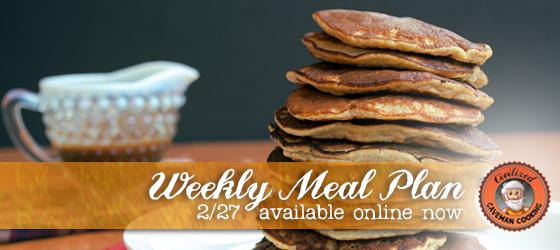
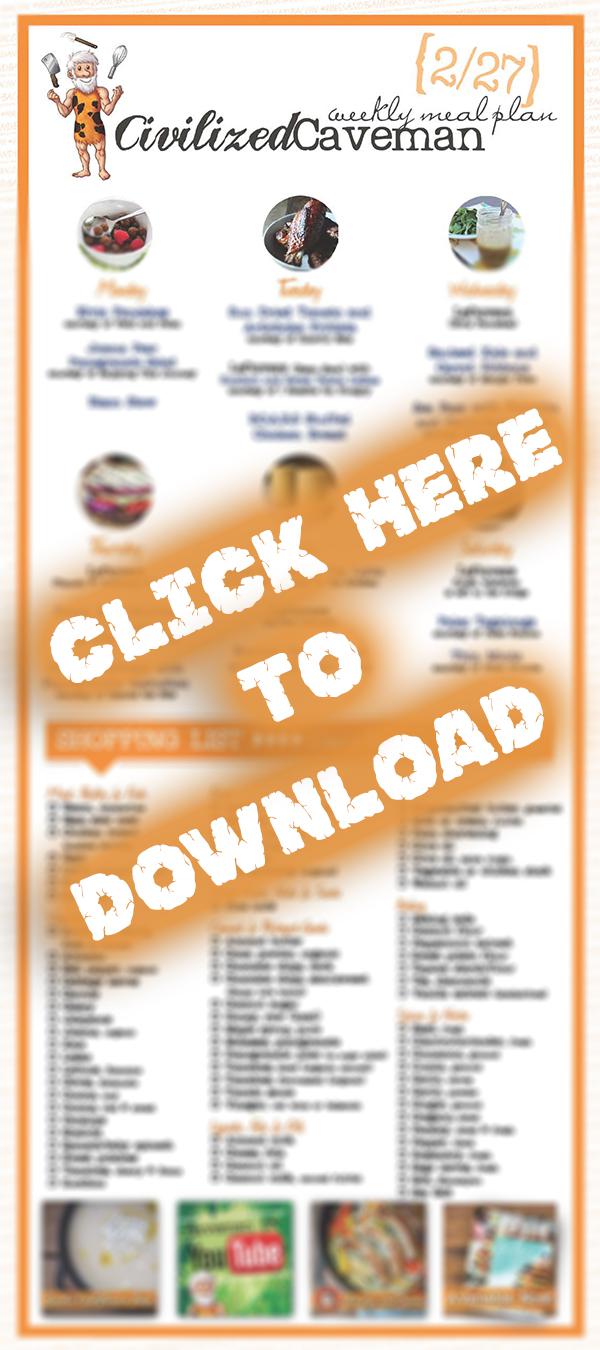

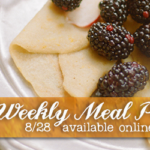
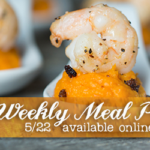
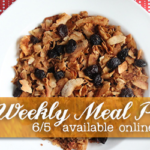
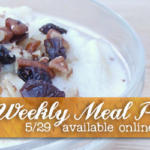
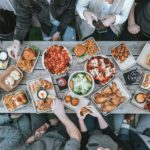
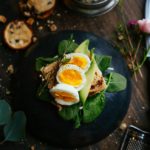
 Paleo Bison Chili
Paleo Bison Chili
where’s the bacon salt?!?!?!:-) I cant find it
It is linked in this post
Excellent post with wonderful information.
My husband does 99.99% of the cooking and I do the baking and the clean up. This year I have tried to give him a break once or twice a week, and make dinner myself. I have had some success and some failure (frustration and learning) along the way.
Your recipes have helped immensely with stretching my culinary comfort zone.
Thank you!
Beth
Ah thank you for commenting Beth :)